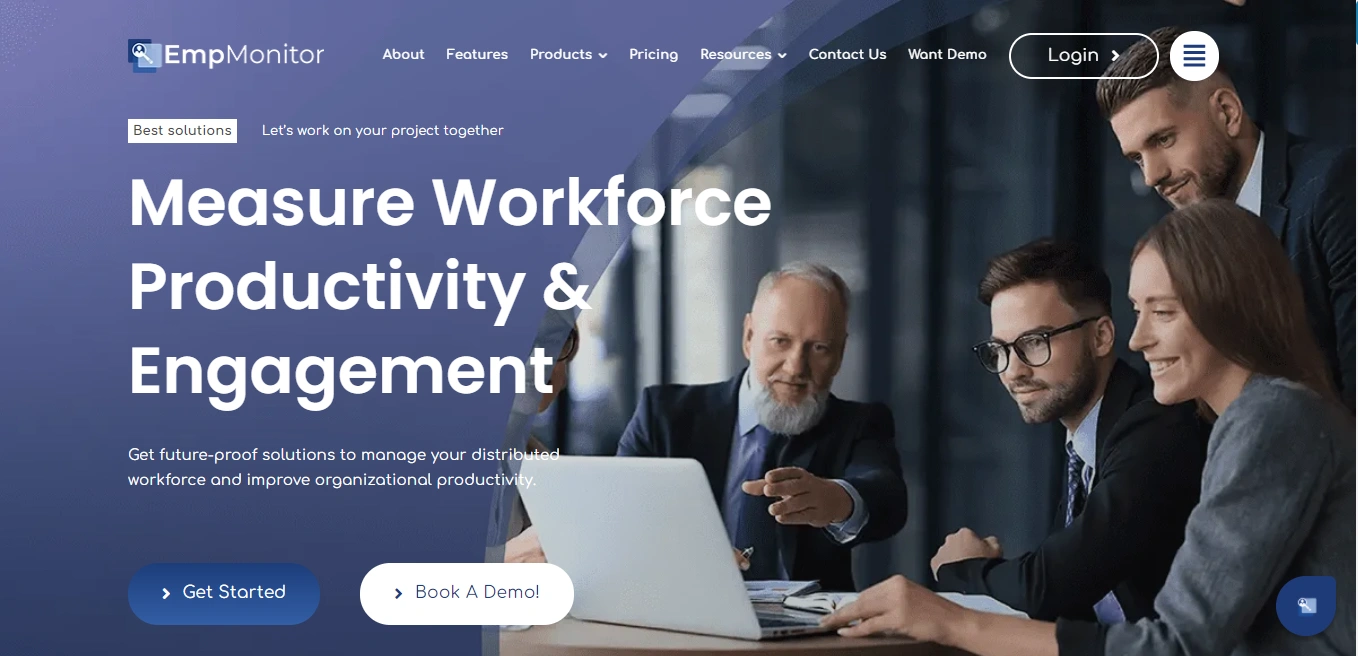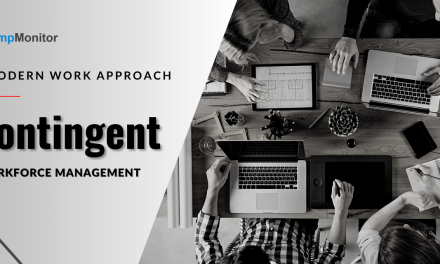Are you struggling to find and retain top talent in your organization? This issue is one that most HR departments face. Being a part of management and keeping your team happy and engaged is crucial in the current job market. To achieve this, enhance your employees’ experience by ensuring they feel better while working.
But why is employee experience important? It’s the vibe your company gives off – from the moment you walk in the door (or log in remotely) to the day you (hopefully) retire.
This blog will be your one-stop solution for all your queries related to the good and bad experiences of employees, giving you the lowdown on why it matters, the challenges you might face, and, importantly, actionable strategies to build a workplace your employees will love. From keeping them productive to feeling valued, we’ll cover it all.
So, leave hiring challenges behind and retain your top talent!
Listen To The Podcast Now!
What is Employee Experience?
Employee Experience (EX) involves every interaction and experience an employee has with an organization, starting from recruitment and continuing through their departure. It includes every aspect of the employee’s journey, including factors such as workplace culture, physical work environment, technology and tools provided, relationships with colleagues and managers, and the overall perception of the organization.
The Role Of Employee Experience At the Workplace –

- Enhanced Employee Engagement: Employees who feel valued, supported, and challenged are more likely to be deeply invested in their work. A positive experience fosters a sense of ownership and a desire to contribute to the company’s goals.
- Improved Productivity and Performance: Engaged employees are naturally more productive. Studies show a direct correlation between a positive experience and increased output, innovation, and problem-solving abilities.
- Reduced Turnover: A negative employee experience can lead to high turnover rates, which incur significant costs in recruitment, onboarding, and lost productivity. By fostering a positive experience, companies retain their talent and avoid these expenses.
- Enhanced Employer Brand: A strong experience translates into a positive employer brand. Satisfied employees become brand ambassadors, attracting top talent through positive word-of-mouth and online reviews.
- Increased Customer Satisfaction: Happy employees translate to happy customers. A positive experience fosters a more positive attitude towards customer service, leading to better interactions and higher customer satisfaction.
Employee Experience Examples: Building a Positive Journey
Employee experience encompasses a vast array of interactions, so let’s explore some key examples that contribute to a rewarding journey:
Onboarding: A well-structured onboarding process sets the tone for the entire employee experience. It includes providing new hires with the information and resources they need to succeed, fostering a sense of belonging, and introducing them to company culture.
Work-Life Balance: Employees crave flexibility and a healthy work-life balance. Companies can offer multiple options to achieve this, including flexible work arrangements, remote work opportunities, and generous paid time off.
Professional Development: Investing in the professional advancement of your employees showcases your dedication to fostering their development. It can include training programs, mentorship opportunities, and tuition reimbursement.
Recognition and Appreciation: Employees crave recognition for their contributions. Implementing a structured recognition program shows your team members that their hard work is valued. It could include public shoutouts, performance bonuses, or personalized rewards.
Open Communication: Transparency and open communication are crucial for building trust and fostering a positive EX. Consistently inform employees about company updates, objectives, and obstacles. Encourage open dialogue with leadership through company-wide meetings, town halls, and anonymous feedback channels.
Positive Work Environment: A positive environment goes beyond offering complimentary snacks and ping-pong tables. It encourages cooperation, teamwork, and a feeling of belonging. Encourage social activities, team-building exercises, and opportunities for employees to connect with colleagues outside work.
Employee Experience Survey: Regularly conducting experience surveys is essential for understanding your employees’ needs and identifying areas for improvement. Surveys should be anonymous and cover workload, work-life balance, job satisfaction, and company culture.
Employee Experience and Employee Management: Employee management plays a critical role in shaping the experience. Empowering managers to provide constructive feedback, offer coaching opportunities, and support professional growth fosters a positive and productive work environment.
Challenges In Employee Experience (EX):
Creating a positive experience is not without its challenges. Organizations must navigate various obstacles to ensure their employees feel valued, supported, and engaged.
Here are some common obstacles in employee experience and strategies to overcome them:
Communication Gaps –
Challenge: Poor communication can lead to misunderstandings, decreased morale, and a lack of alignment with company goals.
Solution: Cultivate a culture of candid and clear communication through regular team meetings, emails, intranet updates, and feedback sessions to keep employees informed and engaged. Encourage managers to maintain open-door policies and actively listen to employee concerns.
Work-Life Balance –
Challenge: Maintaining a healthy work-life balance presents a notable challenge, especially with the rise in remote work. Employees may struggle to set boundaries between their personal and professional lives, leading to burnout and decreased productivity.
Solution: Encourage flexible work arrangements like remote options and flexible hours, promote regular breaks and vacation time, and implement wellness programs with resources for stress management and mental health support.
Employee Recognition –
Challenge: A lack of employee recognition can make them feel undervalued and demotivated, leading to decreased engagement and higher turnover rates.
Solution: Establish a structured recognition program to celebrate individual and team achievements. Recognize employees publicly in company-wide communications and offer tangible rewards such as bonuses, gift cards, or additional time off. Encourage peer-to-peer praise to nurture a culture of appreciation.
Career Development Opportunities –
Challenge: Employees may feel stagnant and unmotivated if they don’t see opportunities for growth and advancement within the company.
Solution: Invest in career development programs, including training workshops, mentorship opportunities, and tuition reimbursement. Create clear career paths and provide regular feedback and coaching to help employees reach their professional goals.
Employee Engagement –
Challenge: Keeping employees engaged and motivated can be difficult, especially in larger organizations where individuals may feel like just another number.
Solution: Promote community and belonging with team-building activities and social events. Encourage collaboration across functions and offer opportunities for employees to engage in meaningful projects. Use employee surveys to gather feedback regularly and implement insights for continuous improvement.
Diverse Workforce Needs –
Challenge: Managing a diverse workforce with varying needs, backgrounds, and expectations can be complex.
Solution: Support diversity and inclusion with policies that promote equal opportunities and a respectful work environment. Educate on cultural awareness and implicit bias. Offer flexible benefits and support programs tailored to diverse employee needs.
Technological Barriers –
Challenge: Inadequate or outdated technology can hinder productivity and frustrate employees.
Solution: Invest in up-to-date tools and technologies that streamline workflows and enhance productivity. Provide training to ensure employees are comfortable using new systems. Regularly review and upgrade technological infrastructure to meet evolving needs.
Feedback and Continuous Improvement –
Challenge: Without consistent feedback and ongoing improvement efforts, it’s challenging to understand and effectively address employee concerns.
Solution: Conduct regular employee experience surveys to gather insights on strengths and areas for enhancement. Establish a feedback loop where employees observe their input influencing tangible changes. Utilize tools like EmpMonitor to track performance and engagement, using data to inform decisions.
Remote Work Dynamics –
Challenge: Managing remote teams presents unique challenges, such as maintaining communication, collaboration, and company culture.
Solution: Utilize collaboration tools and platforms to improve communication and teamwork. Schedule regular virtual meetings and check-ins to keep remote employees engaged and connected. Ensure remote workers feel included by involving them in company events and initiatives.
Maintaining Company Culture –
Challenge: Expanding and evolving companies often struggle to maintain a consistent and positive organizational culture.
Solution: Clearly define and communicate your company values and mission. Lead by example, ensuring that leadership embodies the desired culture. Recognize and celebrate behaviors that align with company values. Regularly reinforce cultural elements through training and communication.
Improving Experience: Proactive Strategies –
Having understood the importance and crucial components of a positive experience. Let’s delve into strategies for creating one:
- Conduct Employee Experience Surveys: Regularly collecting feedback through experience surveys allows you to identify areas of strength and weakness. This data is invaluable for tailoring initiatives to address employee concerns and improve their experience.
- Implement Open-Door Policies: Encourage open communication by fostering a culture where employees feel comfortable voicing their opinions and concerns. Achieve this through regular one-on-one meetings with managers, anonymous feedback channels, or town hall meetings.
- Empower Employees and Encourage Ownership: Give employees the autonomy and trust to make decisions within their roles. It promotes responsibility and ownership, which results in higher engagement and enhanced performance.
- Invest in Learning and Development: Provide opportunities for skill development through training programs, workshops, and conferences. It shows your commitment to employee growth and future success within the organization.
- Recognize and Reward Achievements: Acknowledge achievements, both large and small. Public recognition, bonus programs, or personalized rewards demonstrate appreciation for employee contributions and motivate continued excellence.
- Promote Work-Life Balance: Offer flexible work arrangements, generous vacation policies, and access to wellness programs. It demonstrates your commitment to employee well-being and helps them achieve a healthy work-life balance.
The Role of Employee Management in Creating a Positive Experience:
Employee experience is a shared responsibility, but managers play a critical role in shaping the day-to-day experiences of their team members. Here are some impactful ways managers can make a difference:
- Provide Clear Communication and Direction: Communicate expectations, goals, and deadlines to ensure everyone is aligned. Regular check-ins
- Offer Regular Feedback and Coaching: Regular feedback, both positive and constructive, helps employees understand their strengths and areas for improvement. Invest time in coaching and mentoring to help them develop their skills and reach their full potential.
- Foster Collaboration and Teamwork: Create a collaborative environment where employees feel comfortable sharing ideas, supporting each other, and working towards shared goals. Recognize and reward team achievements to strengthen teamwork.
- Lead by Example: Managers establish the team’s atmosphere. Managers create a positive and supportive work environment by displaying the company’s values, prioritizing open communication, and demonstrating respect.
- Celebrate Wins and Milestones: Take the time to acknowledge and celebrate individual and team successes. It promotes a feeling of achievement and inspires ongoing dedication.
- Be Approachable and Supportive: Be available to answer questions, address concerns, and offer support. Employees who feel at ease approaching their manager tend to exhibit higher engagement and productivity.
How EmpMonitor Can Enhance Employee Experience –

Improved Productivity and Performance:
EmpMonitor provides insights into how employees spend their time. This data can help identify areas for streamlining workflows or pinpoint training opportunities to address skill gaps. Features like time tracking and application monitoring can help employees see how they allocate their time and make improvements for better focus.
Enhanced Communication and Collaboration:
EmpMonitor offers features like real-time activity monitoring and screenshot capture (with user consent), which can facilitate communication between managers and employees. It can be helpful for remote teams or asynchronous work schedules. Managers can understand an employee’s workload better and offer more precise feedback.
Data-Driven Recognition:
EmpMonitor can help implement recognition programs that target specific achievements by tracking activity and identifying high performers. It can motivate employees and foster a culture of appreciation.
EmpMonitor emphasizes transparency and provides customizable dashboards. It allows employees to see their productivity data and track their progress toward goals. It can be a powerful tool for self-improvement and increased ownership over work.
EmpMonitor is most effective when implemented with an emphasis on employee well-being. Clear communication about data usage and setting boundaries around monitoring are crucial. When used effectively, EmpMonitor is a valuable tool for collecting data, enhancing processes, and fostering a positive work environment.
Also read: –
7 Onboarding Best Practices That Can UpSkill The Employee Experience
07 Effects of Employee Recognition on Workforce Management
How To Improve Employee Experience In A Distributed Workforce?
Conclusion:
In conclusion, fostering a positive employee experience (EX) is a strategic investment for any organization. Companies can cultivate a happy, engaged, and productive workforce by prioritizing EX through effective onboarding, work-life balance initiatives, and growth opportunities. Remember, managers play a crucial role in shaping EX. Their ability to provide clear communication, constructive feedback, and ongoing support empowers employees and strengthens the overall company culture.
FAQs: –
Q.1 What role does technology play in enhancing employee experience?
Technology is crucial in modern workplaces for streamlining processes, facilitating communication, and enabling remote work. Tools like EmpMonitor can provide insights into productivity patterns, which helps optimize workflows and support employee well-being.
Q.2 How can small businesses improve employee experience on a limited budget?
Small companies can enhance experience by focusing on clear communication, recognition programs, and fostering a positive company culture. Implement flexible work arrangements and leverage low-cost technologies to achieve significant impact.
Q.3 What are the key indicators of a positive employee experience that recruiters look for during hiring?
Recruiters often look for indicators such as employee retention rates, employer reviews on platforms like Glassdoor, and employee testimonials. A strong employer brand built on positive experiences attracts top talent and contributes to the company’s overall success.














